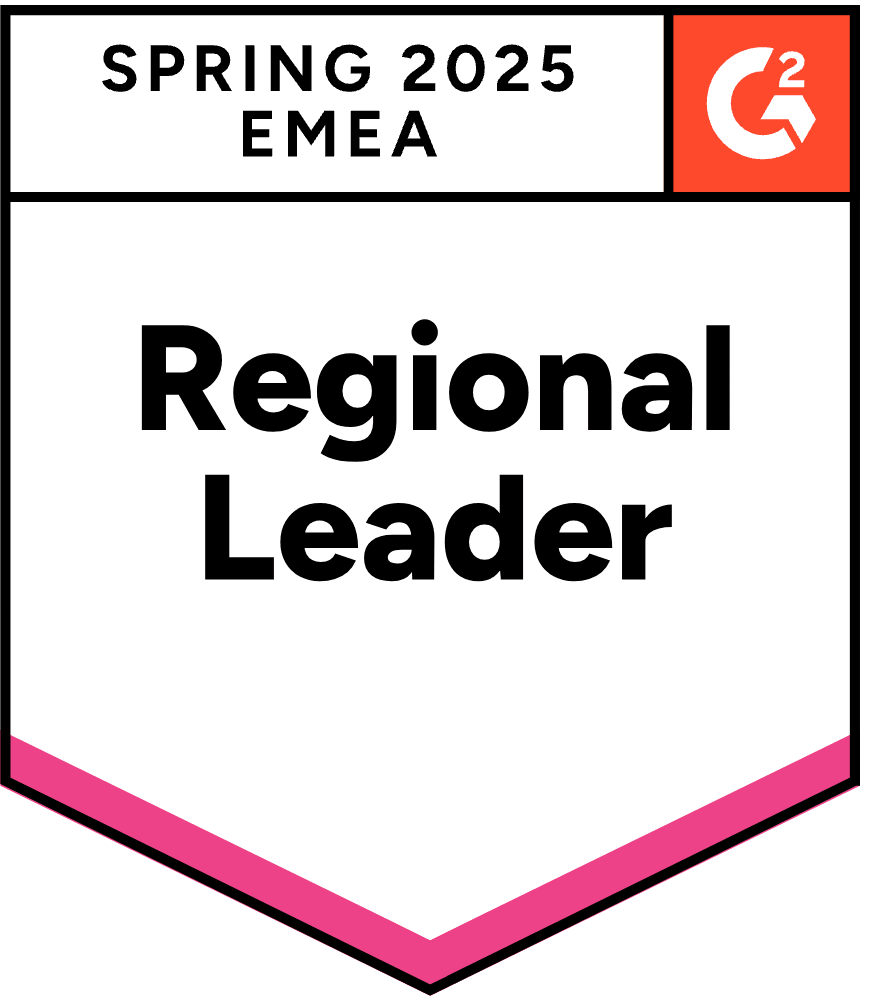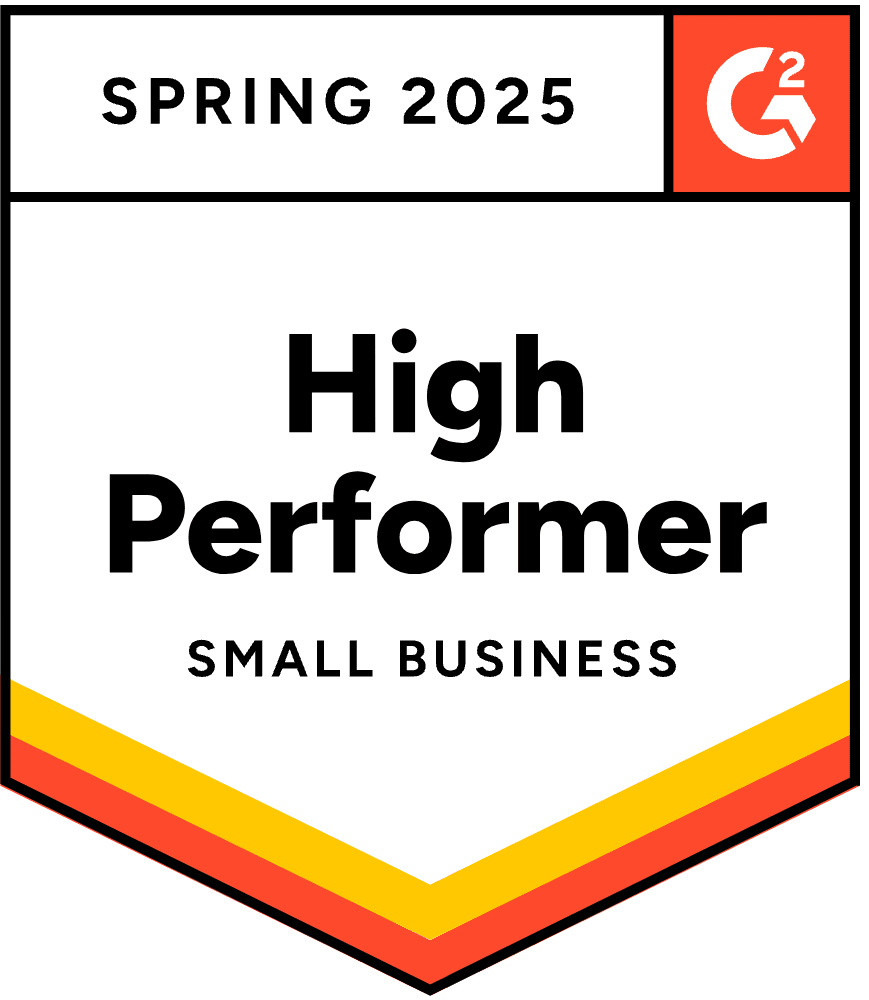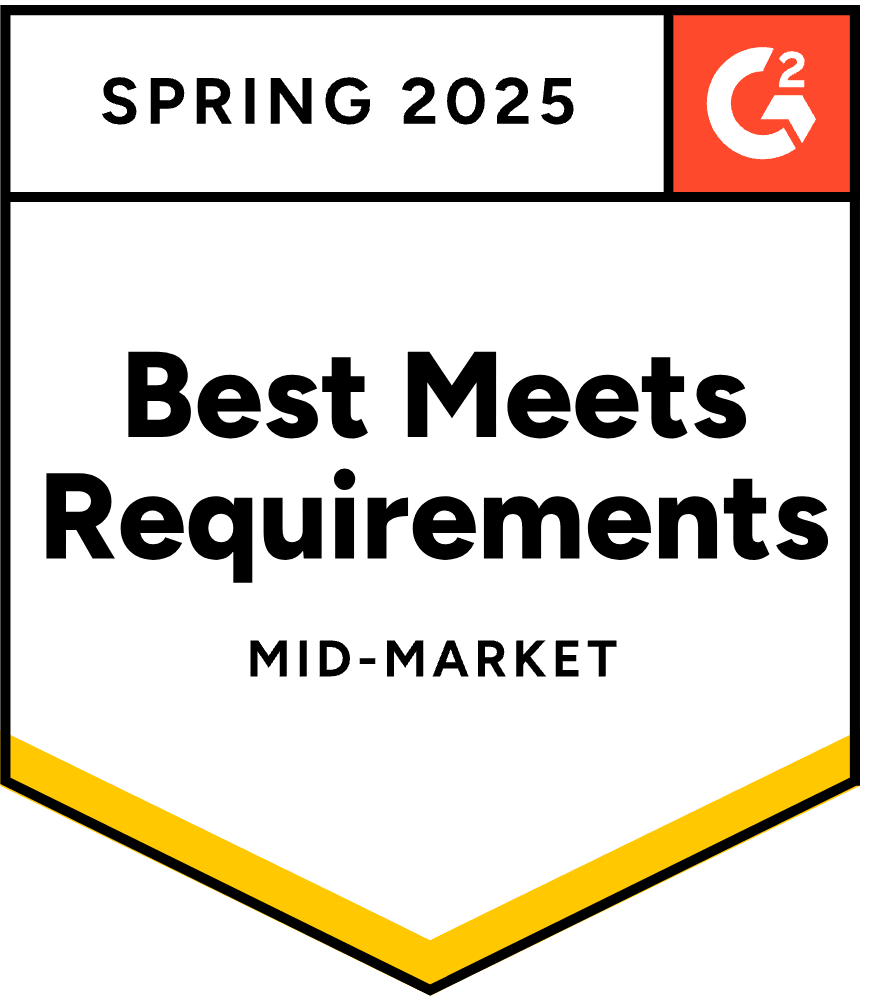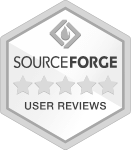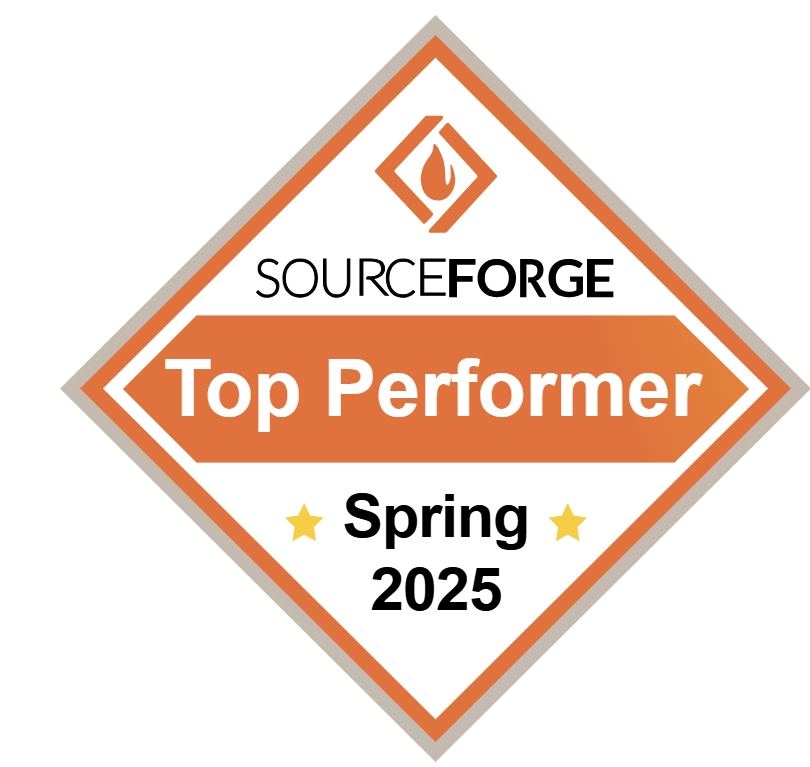- Blog
- 10 Inspiring Shopify Success Stories and What You Can Learn from Them
10 Inspiring Shopify Success Stories and What You Can Learn from Them
-
Barbara Bartucz
- Ecommerce
- 6 min read
Table of Contents
Running a Shopify business isn’t always smooth sailing. Sometimes, you get tons of traffic but no sales. Other times, visitors fill their carts—only to abandon them.
If you’re looking for real-world examples of brands that faced these challenges and overcame them, you’re in the right place.
Here are 10 inspiring Shopify success stories, highlighting the biggest hurdles these brands faced and how they tackled them head-on.
10 successful case studies from Shopify store owners
Let’s see 10 Shopify success stories and check out how these companies overcame their biggest challenges!
1. Gelpro Australia
Let’s start our success stories roundup with Gelpro Australia. They were using Klaviyo popups to build their email list but they weren’t seeing the conversion rates they wanted.
Many visitors were leaving without making a purchase, and cart abandonment remained an ongoing issue.
What did they do?
They tackled these problems by making a few key optimizations. First, they improved their product pages to create a better shopping experience.

Then, they implemented AI-powered personalized recommendations to suggest relevant products to visitors.
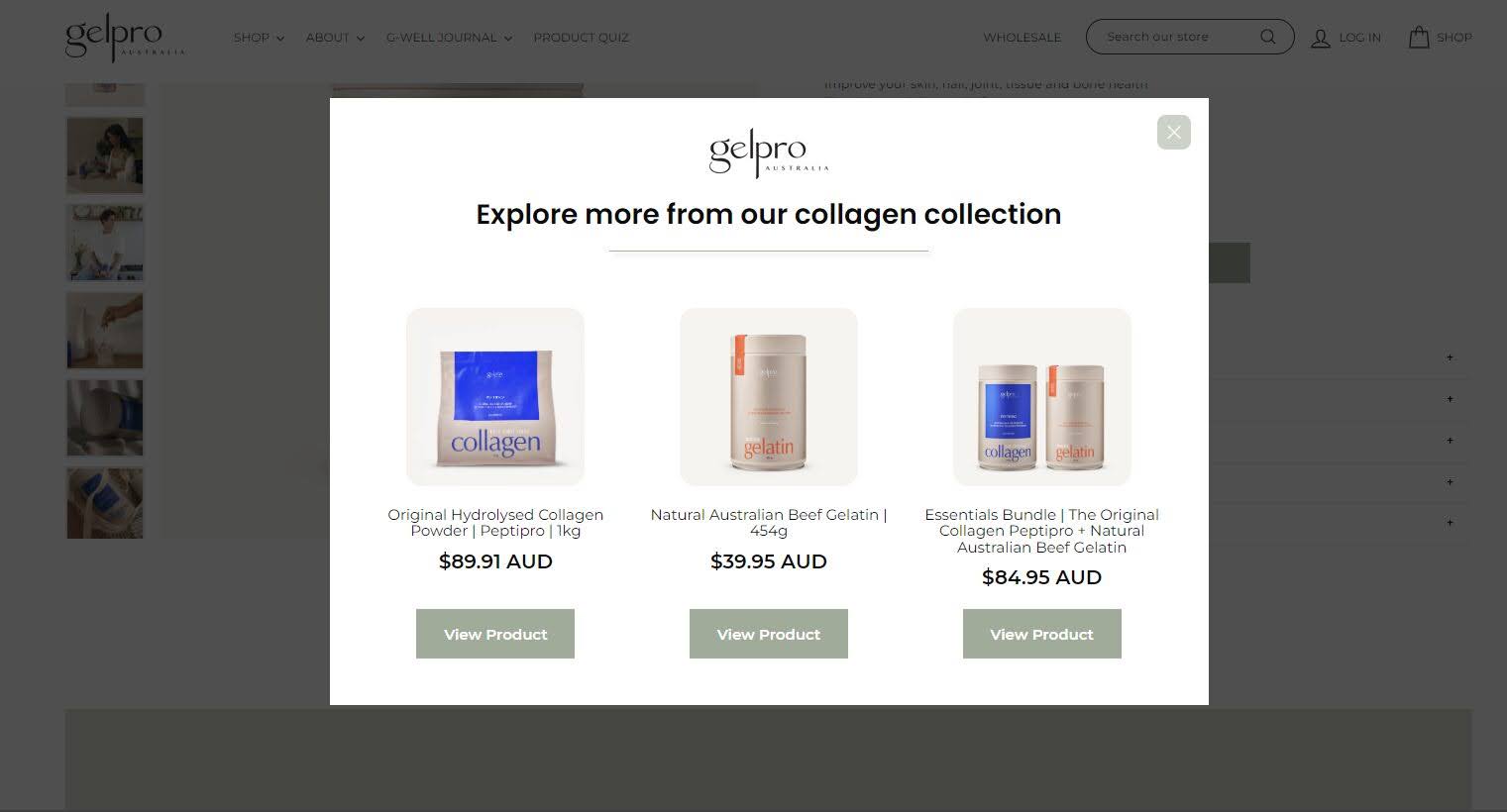
Lastly, they introduced browsing reminders to re-engage customers by reminding them about the items they had previously viewed.
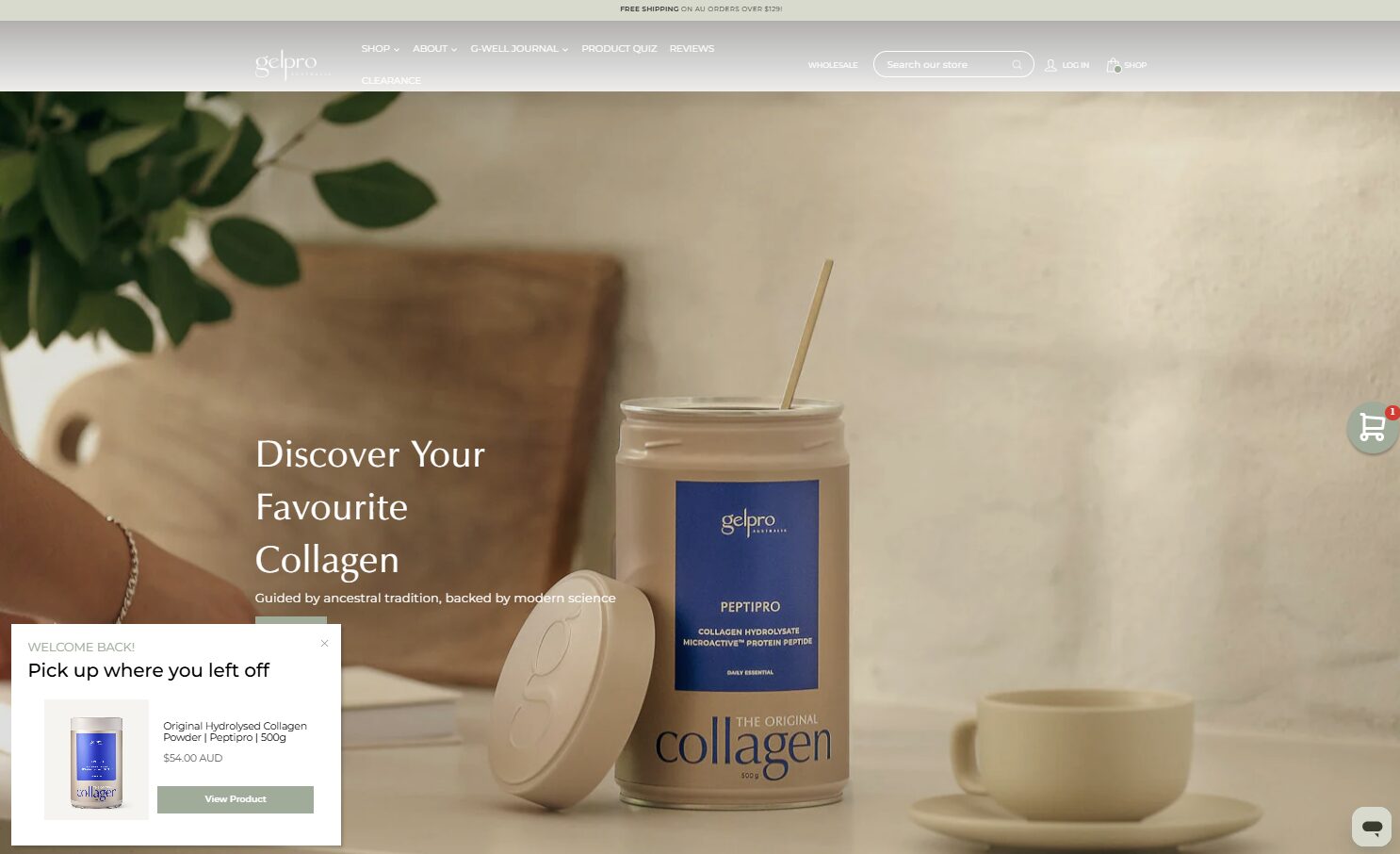
The result?
These changes led to a 30% increase in sales, proving that small, data-driven improvements can yield big results.
2. Sassy Scents
Sassy Scents had been using Klaviyo popups, but they weren’t converting as well as expected. They wanted to improve their website’s conversion rates and find a more effective way to turn visitors into customers.
What did they do?
They switched to OptiMonk’s Smart Discount Popup, which not only collected email addresses but also provided personalized product recommendations based on visitors’ browsing behavior.
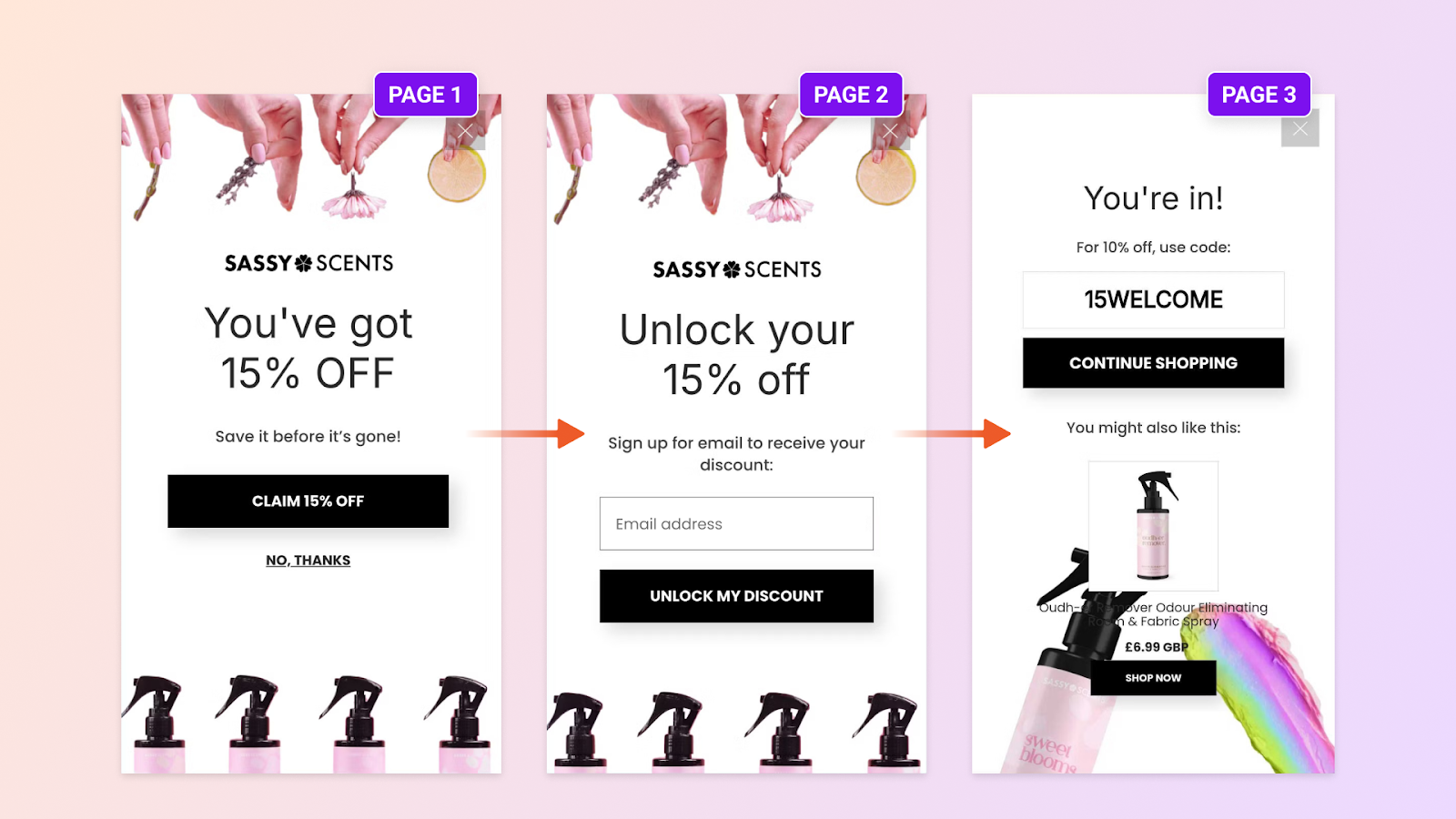
Instead of a simple opt-in, the popup used a Yes/No format to engage users in a more interactive way.
The result?
By implementing this strategy, Sassy Scents saw a 25% average conversion rate, making this popup one of their most effective lead-generation tools.
3. ParfumeLab
ParfumeLab faced a common ecommerce problem: many visitors browsed their store but left without making a purchase.
However, they noticed that a good portion of these visitors eventually returned—yet may of them still didn’t buy.
What did they do?
To encourage returning visitors to complete their purchases, they introduced a “Welcome Back” popup. This wasn’t just a generic greeting—it included a personalized reminder of the specific products visitors had viewed on their last visit.
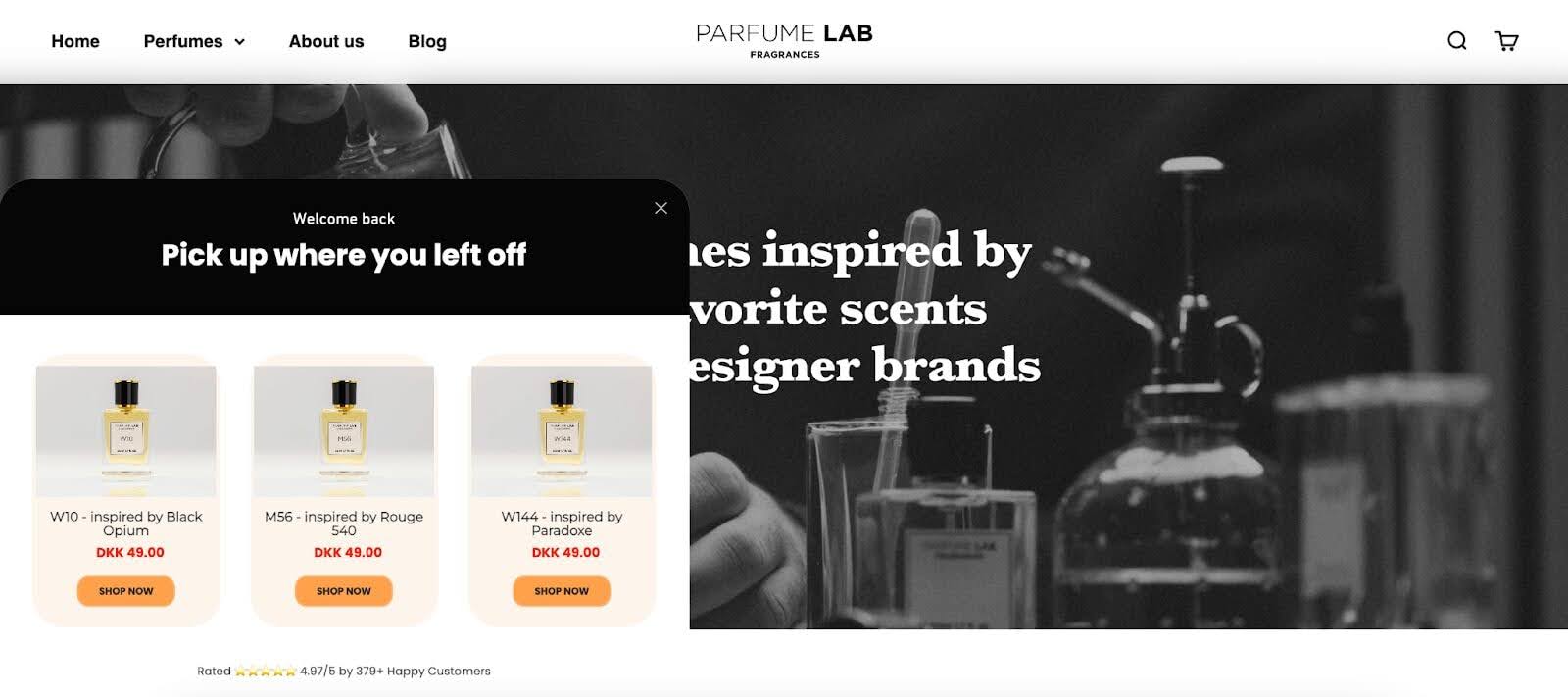
The result?
By making their return customers feel recognized and welcome, they achieved a 19.22% conversion rate among returning visitors.
4. Desert Does It
Desert Does It wanted to personalize communication with visitors and understand their audience better. But beyond that, they needed a strategy to convert email subscribers into paying customers.
What did they do?
They launched an interactive quiz popup to collect zero-party data from new visitors. Instead of a standard opt-in form, this quiz engaged users by asking targeted questions about their preferences.
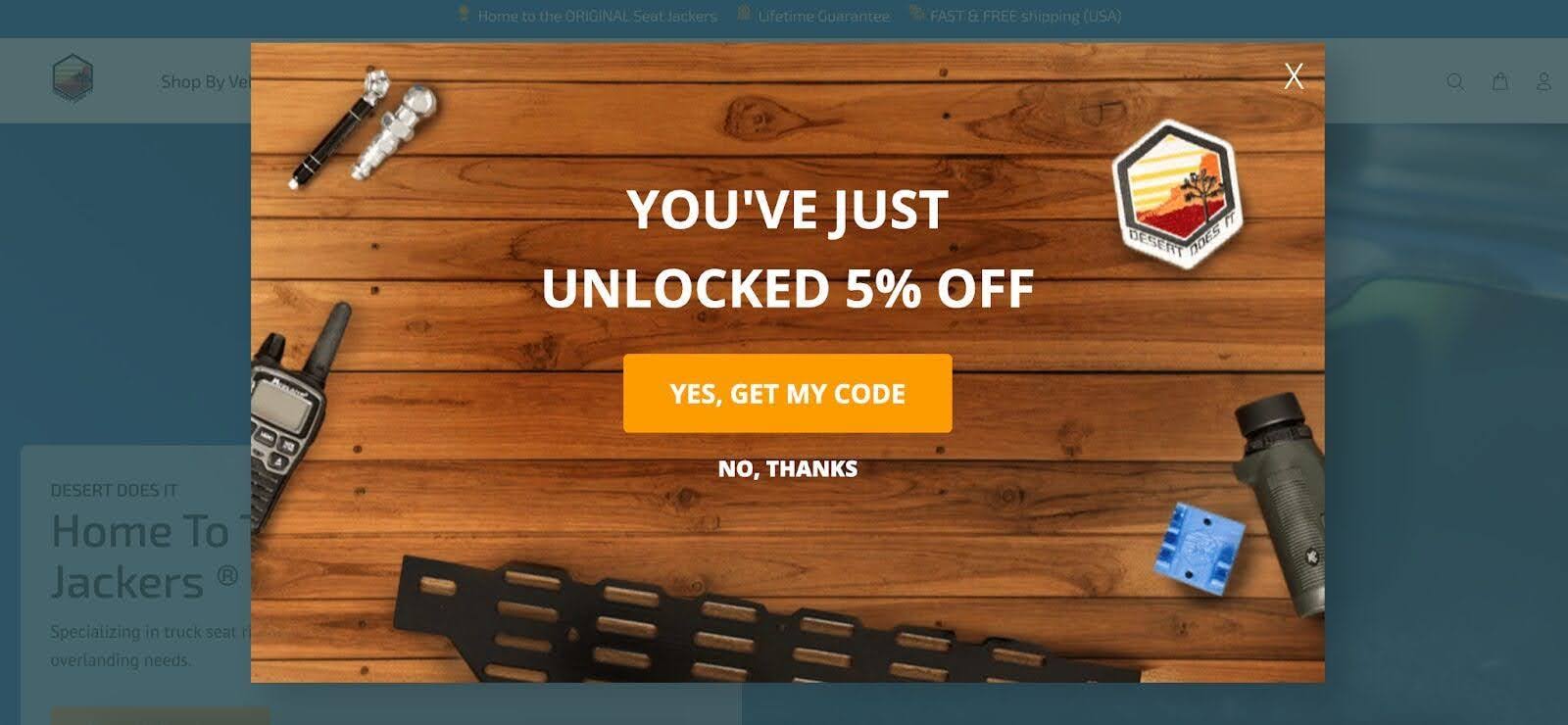
Additionally, they found success by implementing a Trojan Horse strategy, which segmented visitors first before inviting those who showed purchase intent to join their SMS list.
The result?
This method led to a 5.77% conversion rate, with quiz participants opting into their email list in exchange for a discount.
5. Lammle’s
Lammle’s was already successful with its physical stores but wanted to optimize its ecommerce business. They saw potential for higher conversions but needed a way to engage new homepage visitors and guide them toward making a purchase.
What did they do?
They introduced a personalized product recommendation popup, designed to help hesitant visitors who lingered too long on the homepage.
This popup suggested Lammle’s most popular products, making it easier for new visitors to start shopping.
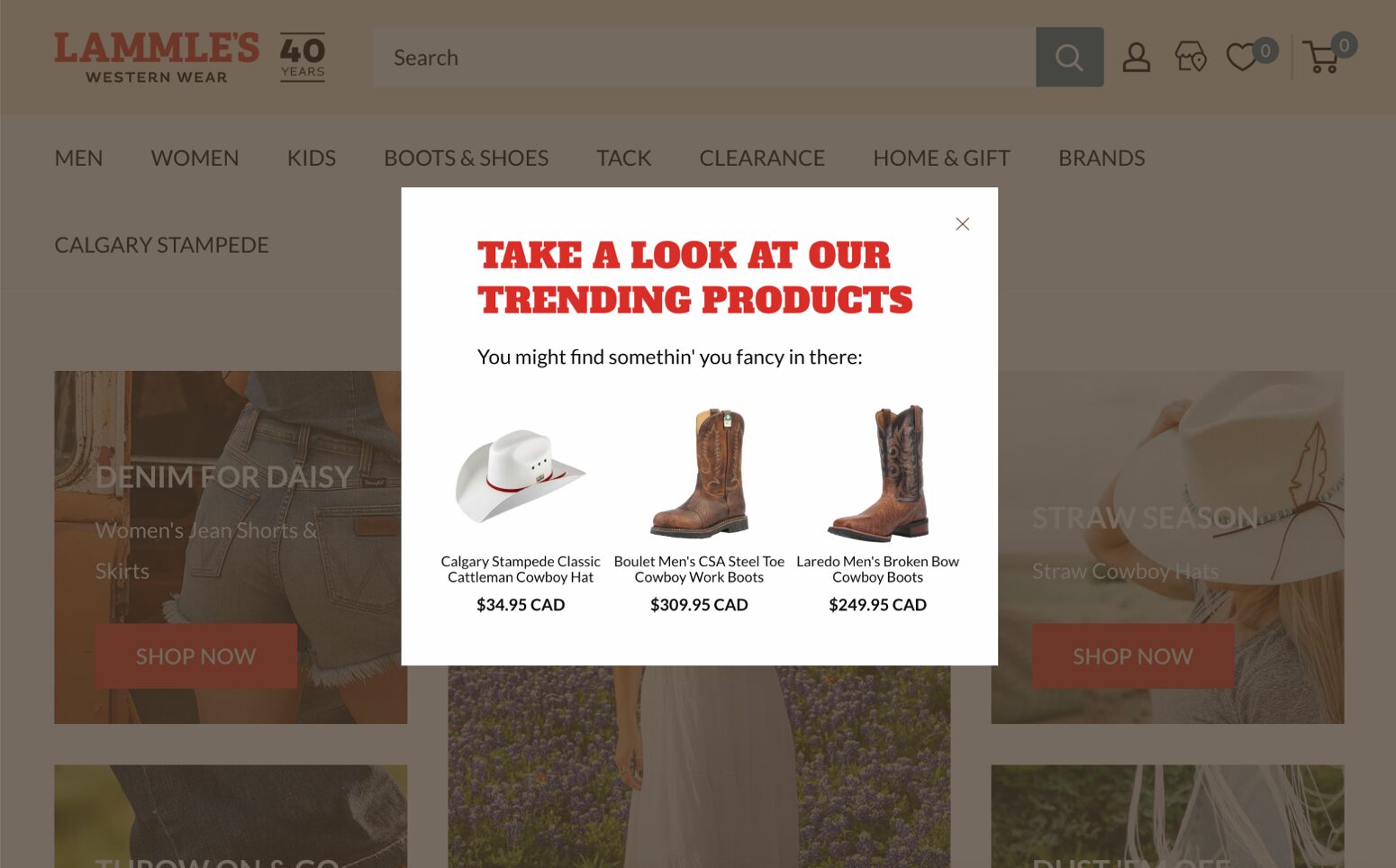
The result?
This simple yet effective approach resulted in a 17.3% increase in sales among new visitors who spent at least 30 seconds on the homepage.
6. Mott & Bow
Despite high traffic numbers, Mott & Bow was missing out on conversions. Many visitors browsed but left before completing a purchase.
What did they do?
They launched a Smart Discount Popup, a high-converting list-building tactic. The popup had a fullscreen, multi-step design with a compelling offer and was carefully timed to appear only to new visitors.
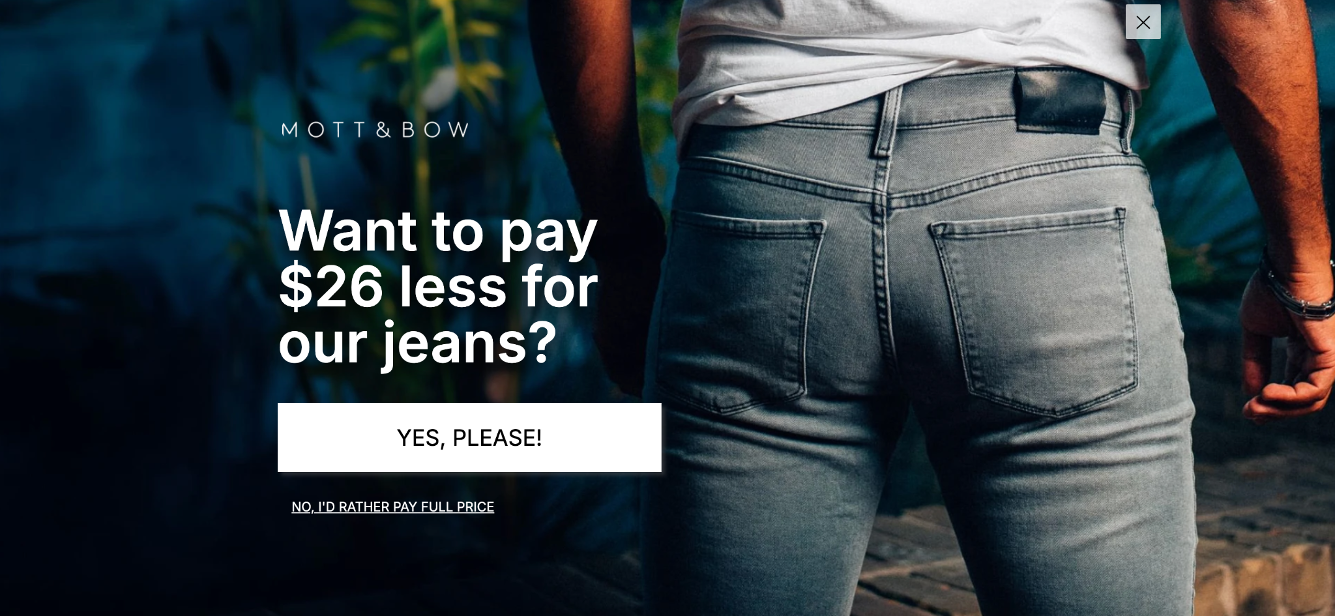
The result?
The campaign helped Mott & Bow collect over 100,000 new email subscribers in just six months, giving them a powerful new channel for customer engagement.
7. Nexus Nutrition
During Afterpay Day, Nexus Nutrition’s simple discount popup wasn’t generating the conversions they had hoped for. They needed a fresh approach to increase engagement.
What did they do?
E2 Agency took over and introduced a mystery discount popup. Instead of showing the discount upfront, they first asked visitors for their email addresses.
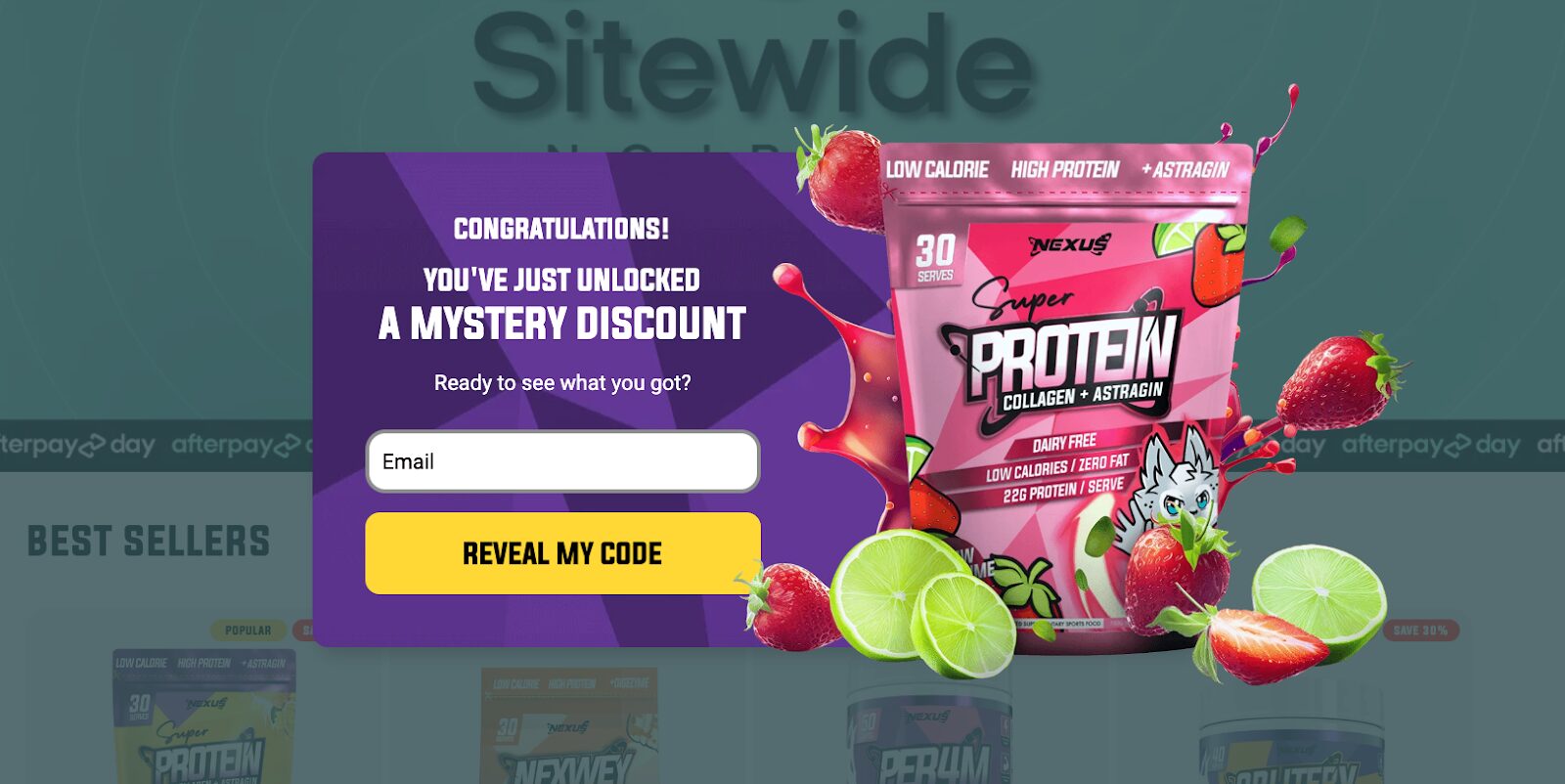
After opting in, customers were invited to join their SMS club for exclusive perks, such as early access to sales.
The result?
This Trojan Horse method worked wonders, achieving an 11.78% email conversion rate and a 4.28% SMS conversion rate.
8. Goldelucks
Goldelucks wanted to focus on converting visitors who were about to leave their Shopify store without making a purchase.
What did they do?
Using OptiMonk’s Smart Popups, they created a personalized exit-intent popup featuring AI-generated headlines and tailored product recommendations based on browsing history.
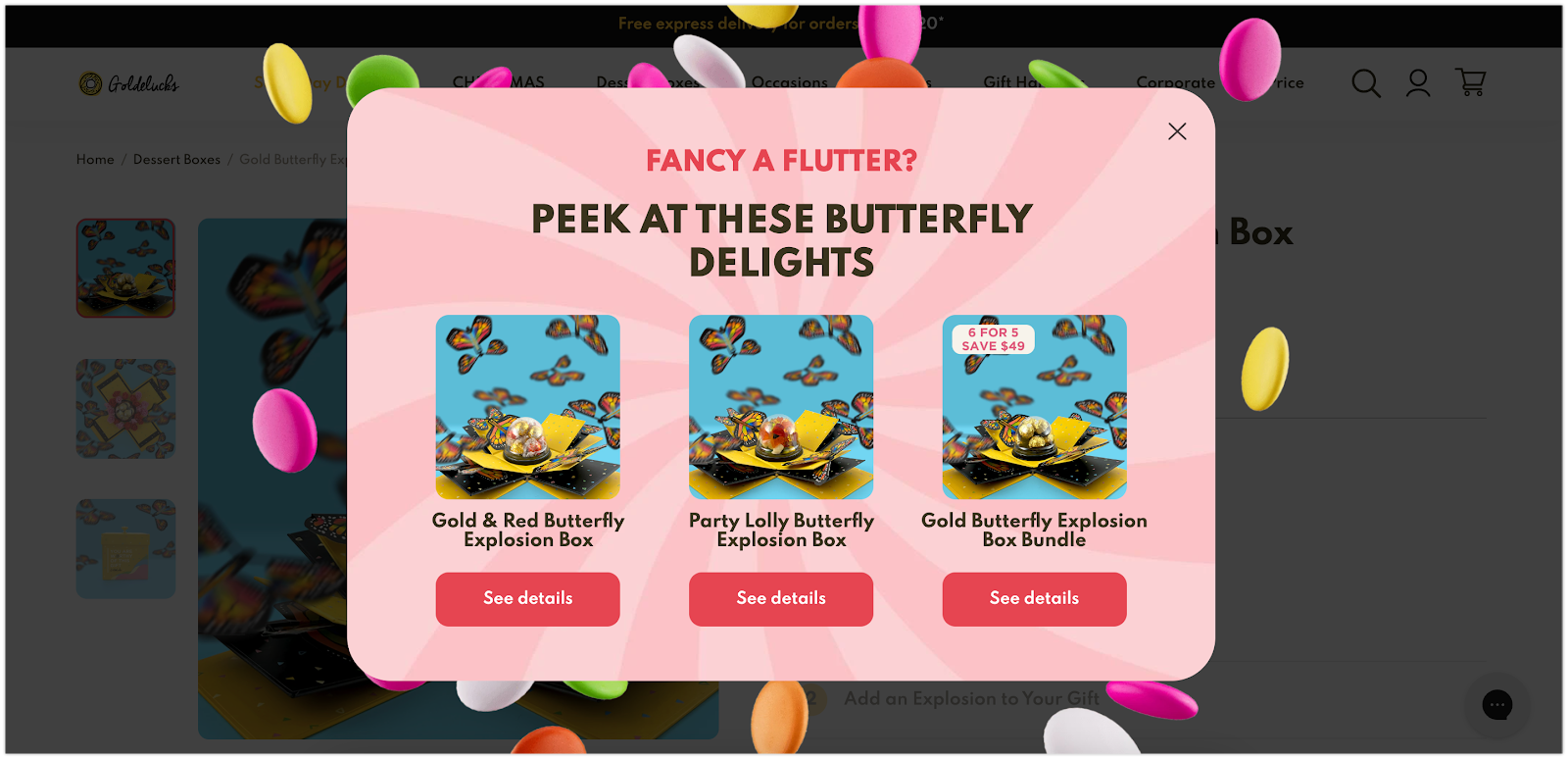
The result?
This strategy led to a 12.27% increase in orders, proving that AI-driven personalization can have a significant impact on conversions.
9. Craft Sportswear
Craft Sportswear is an excellent example of a brand who found a successful SMS list-building strategy. They wanted to launch an SMS marketing campaign, but had no subscriber list.
What did they do?
They created a popup campaign targeting their most loyal customers—their current email subscribers. To incentivize sign-ups, they offered a $35 discount for joining the SMS program.
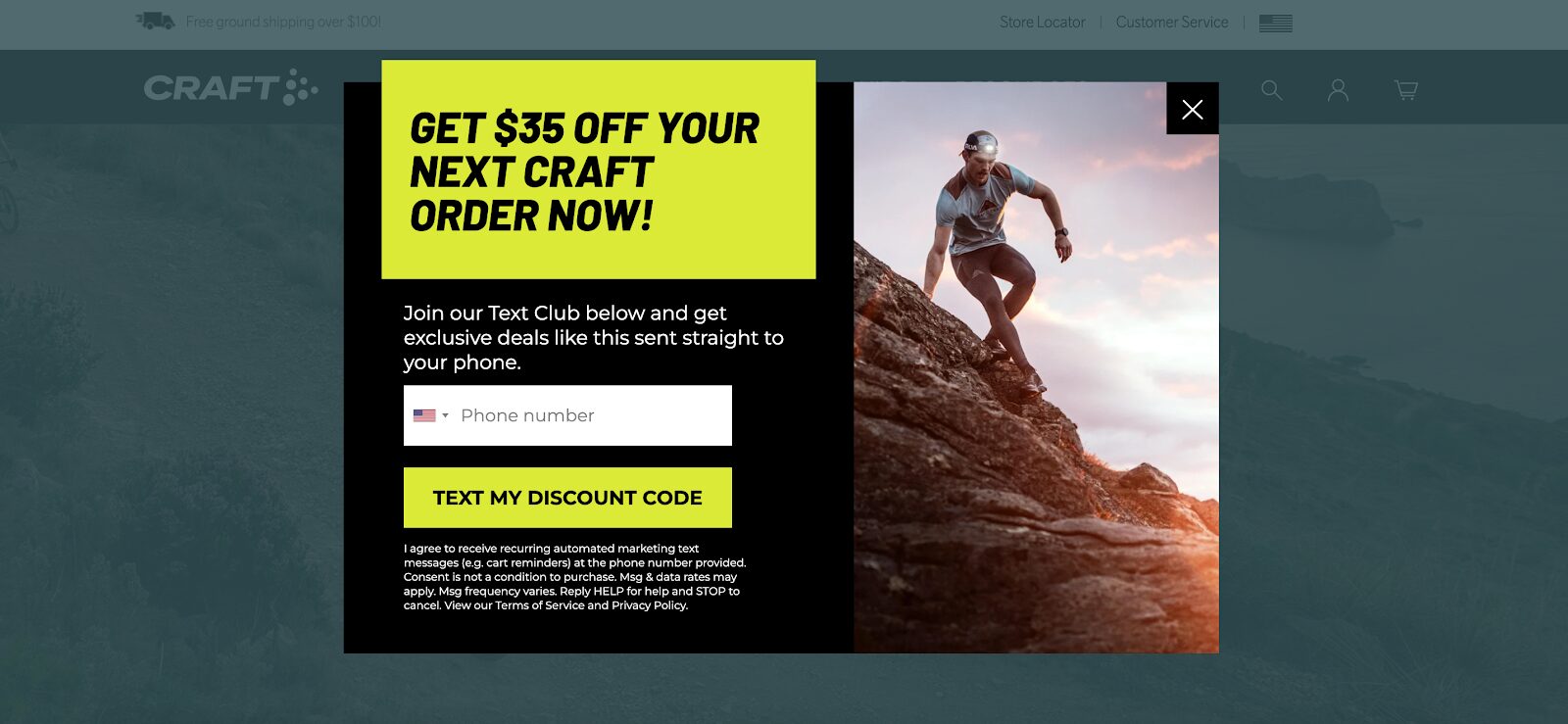
The result?
This strategic approach helped the Shopify store quickly build a high-quality SMS subscriber list, laying the foundation for a strong SMS marketing strategy.
10. Indestructible Shoes
This brand wanted to reduce cart abandonment and turn more traffic into revenue.
What did they do?
They introduced a cart abandonment popup featuring a limited-time 25% discount and a countdown timer to create urgency.
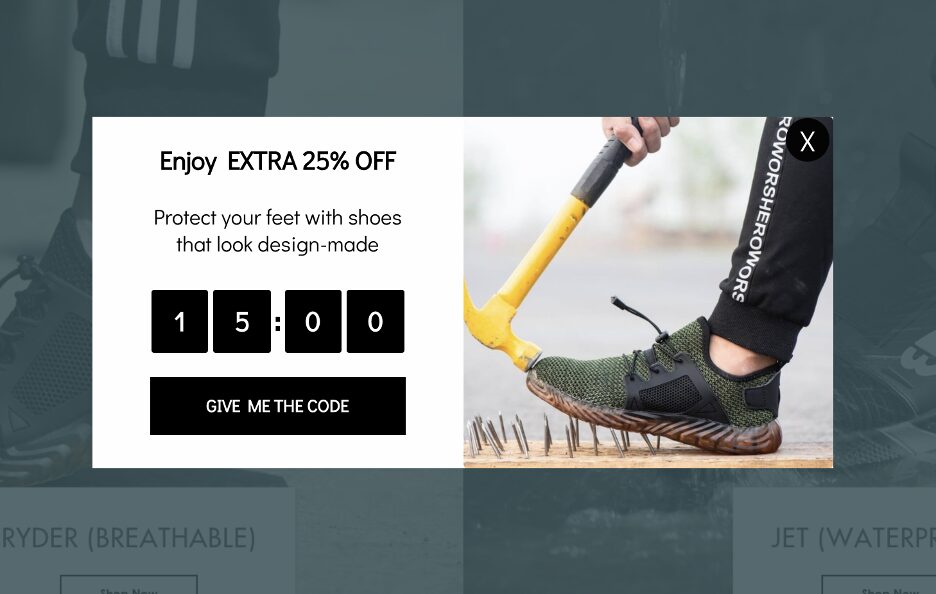
The result?
This method successfully encouraged more shoppers to complete their purchases, leading to a significant boost in conversions.
What makes a Shopify ecommerce business successful?
A thriving Shopify store goes beyond just selling products—it creates an engaging, seamless shopping experience that draws visitors in and turns them into loyal customers.
The success stories of these stores reveal the strategies and elements behind their impressive growth.
Here are the key factors that contribute to Shopify success, as demonstrated by successful entrepreneurs:
1. High-quality product images
Clear, professional images are crucial for establishing a profitable online business. They help build trust and give customers a detailed look at what they’re buying. Multiple angles, zoom-in features, and lifestyle shots can significantly boost conversions.
2. Mobile-friendly design
With most online shopping happening on mobile devices, a fast, responsive, and easy-to-navigate mobile site is essential. A smooth mobile experience reduces abandoned carts, boosts engagement, and keeps customers coming back for more.
3. Intuitive navigation
The combination of a clutter-free layout, well-organized categories, and a powerful search function makes it easy for customers to find what they need. The fewer obstacles along their shopping journey, the more likely they are to make a purchase.
4. Successful list building
Email and SMS marketing remain powerful sales drivers.
Capturing leads through popups, discount offers, and interactive quizzes helps businesses build a strong customer base for long-term engagement.
Get started with these templates now:
5. Personalization and AI-driven recommendations
Shoppers respond well to personalized experiences. AI-powered product recommendations, tailored discounts, and behavior-based popups increase engagement and encourage purchases by delivering the right offers to the right audience.
These strategies save valuable time for both the store and the customer, enhancing the overall shopping experience.
Start using these templates now:
6. Strong trust signals
When customers trust a store, they’re more likely to complete their purchase. Customer reviews, testimonials, secure payment options, and clear return policies help establish credibility and encourage shoppers to feel secure enough to buy.
7. Data-driven optimization
Wildly successful Shopify stores thrive by continuously analyzing data—tracking customer behavior, testing different strategies, and refining their approach to maximize conversion rates and customer retention.
By focusing on these essential elements, Shopify store owners can build a high-performing ecommerce business that not only attracts visitors but also converts them into loyal repeat customers.
FAQ
How do most successful Shopify stores increase conversions?
High-performing Shopify stores focus on key factors like fast-loading pages, mobile-friendly design, trust signals (like reviews and secure payment options), and intuitive navigation. Many also implement popups, personalized discounts, and abandoned cart recovery campaigns to convert visitors into customers.
Can small businesses achieve Shopify success?
Absolutely! Many Shopify success stories come from small businesses that started with limited resources but used smart strategies to scale. By focusing on effective list building, engaging marketing campaigns, and customer retention techniques, even small brands can achieve significant growth.
What are the most effective marketing strategies for Shopify stores?
Successful Shopify stores often use a mix of marketing tactics, including:
- Email and SMS marketing to nurture leads and drive repeat sales.
- Personalized popups that offer discounts or recommend products based on browsing behavior.
- AI-powered recommendations to enhance the shopping experience.
- Retargeting ads to bring back visitors who didn’t make a purchase.
- Leveraging social media platforms to build brand awareness, drive traffic, and connect with customers through engaging content, influencer collaborations, and paid advertising.
Wrapping up
These Shopify success stories showcase brands that faced common ecommerce challenges—low engagement, low conversions, and high cart abandonment—but found innovative solutions to turn things around.
Whether through AI-powered personalization, interactive quizzes, SMS marketing, or time-sensitive discounts, each of these strategies led to impressive growth.
Looking for ways to boost your own Shopify business? Try these tactics by creating a free OptiMonk account and watch your conversions soar!
Migration has never been easier
We made switching a no-brainer with our free, white-glove onboarding service so you can get started in the blink of an eye.
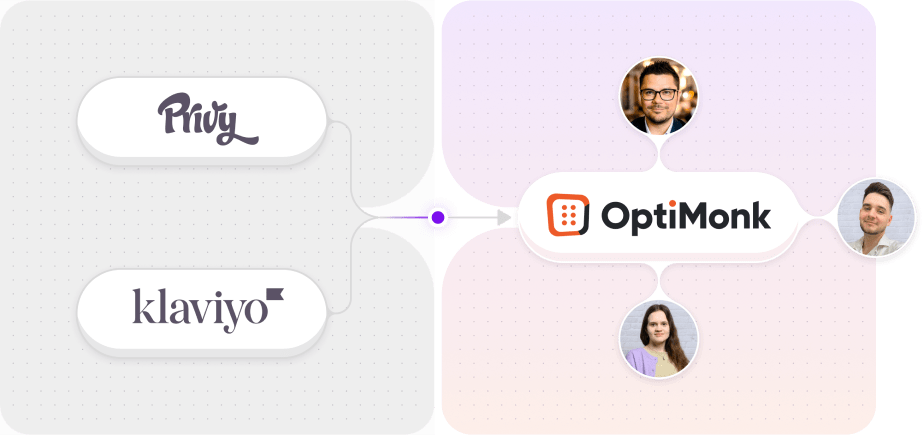
What should you do next?
Thanks for reading till the end. Here are 4 ways we can help you grow your business:
Boost conversions with proven use cases
Explore our Use Case Library, filled with actionable personalization examples and step-by-step guides to unlock your website's full potential. Check out Use Case Library
Create a free OptiMonk account
Create a free OptiMonk account and easily get started with popups and conversion rate optimization. Get OptiMonk free
Get advice from a CRO expert
Schedule a personalized discovery call with one of our experts to explore how OptiMonk can help you grow your business. Book a demo
Join our weekly newsletter
Real CRO insights & marketing tips. No fluff. Straight to your inbox. Subscribe now
Barbara Bartucz
- Posted in
- Ecommerce
Partner with us
- © OptiMonk. All rights reserved!
- Terms of Use
- Privacy Policy
- Cookie Policy
Product updates: January Release 2025
